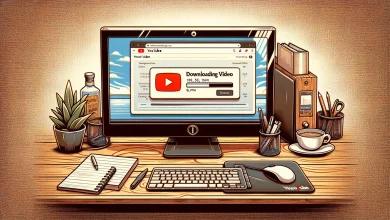How to Fix Network Error 503 on YouTube?
Most commonly, the network error 503 on YouTube occurs when users select a video from the Watch Later list. Interestingly, if the same video is accessed from regular search results, it usually plays without any issues and the error message does not appear. When this error presents itself, the YouTube app fails to load comments and descriptions for the affected videos.

What Causes this Error?
We have investigated this particular issue by examining various user reports and the repair strategies commonly used to resolve this error.
This status code indicates a server-side problem, which usually surfaces when the site’s server is unreachable for some reason. It has been known to affect various browsers and operating systems and can occur on both smartphones and desktop computers.
The error is often attributed to issues with the connector. Through our investigations, several potential causes of this error have come to light:
- Connection timeout: A connection timeout can happen when the APN settings are changed from their default configuration, which might lead to inconsistencies in how the device accesses data from the servers. Resetting the Access Point Names to their default values should resolve the issue if this is the case.
- Corrupted cached data: Particularly common on Android devices, corrupted cache data folders can cause this error. Clearing the cache data can often fix this problem.
- Server too busy or undergoing maintenance: If the issue is server-side, such as during scheduled maintenance or an unexpected outage affecting your area, the only option is to check the status of Youtube servers regularly.
- Playlist queue too long: If a playlist, particularly the Watch Later list, contains too many videos (over a thousand), the app might struggle to load it. Reducing the number of videos in the playlist to below a hundred should help.
1. Verify the Status of Google Servers
Before diving into other methods and troubleshooting with various recommended strategies, confirm that the issue is not beyond your direct control.
Youtube servers are known for their reliability, but they do undergo maintenance occasionally. For instance, just last year, there was a significant outage where the [503] error was prevalent among user reports.
Check if the issue is not entirely server-side by visiting sites like DownDetector or Outage.Report to see if other users are experiencing similar problems.

YouTube’s official Twitter account (@TeamYouTube) is also a reliable source for updates on scheduled maintenance or significant outages.
2. Delete Videos from the Watch Later List
This error commonly occurs for users who have gathered numerous videos in their Watch Later list. While there is no formal explanation, many have reported resolving the issue after they cleared all videos from the Watch Later list.
Following this, upon restarting the app and adding new videos to the Watch Later list, the error did not reappear. This indicates a potential recurring bug in Google’s platform possibly related to this issue.
Below are instructions for removing videos from the Watch Later list. You will find a guide for desktop users (PC and Mac) and another for mobile users (Android & iOS). Follow the guide that corresponds with your device type.
Deleting videos from the Watch Later list on Android
- Open the YouTube app from your home screen.
- Navigate to the Library using the profile button at the bottom right of the screen.
- Select Watch Later to access the desired menu.

- In the Watch Later menu, tap the three vertical dots located at the top right of the screen and choose Remove from Watch Later.

- Reopen the YouTube app, add a new video to the Watch Later list, and check if the video plays without the error.
Delete Videos from the Watch Later List on PC
- Launch your browser and visit YouTube (here).
- Click on Watch Later located at the left side of the screen.

- In the Watch Later list, click the action button (three-dot icon) next to each video and select Remove from Watch Later. Continue until the list is entirely empty.

- Add a new video to the Watch Later List and check if the error persists when you attempt to play it.
3. Clear Youtube’s Cache Data
When you clear YouTube’s cache data, you’re basically clearing up the temporary storage area on your device where the YouTube app keeps bits of information to speed up performance. Over time, this cache can become cluttered or corrupted, which may lead to errors like the 503 network error.
By clearing it, you force YouTube to fetch fresh data from its servers, potentially resolving any issues that were caused by outdated or corrupt cache data. It’s like giving the app a fresh start, which can smooth out any glitches, including playback problems from your Watch Later list.
- Open Settings on your mobile.
- In the main Settings menu, tap Apps.

- Scroll through the app list until you find YouTube. Tap on it.

- In the Youtube App Info, tap on Storage. Inside this menu, select Clear data and confirm the action.
- After clearing data, also tap on Clear Cache and confirm.

- Launch the Youtube app again and see if the error has been resolved.
4. Reset APN Settings to Default
APN configurations are the gateway for your device to access a mobile network’s data services. By reverting these settings to their original state, you clear any possible custom configurations that might be blocking your connection to YouTube servers, hence potentially resolving the network error 503. This reset promotes a fresh start for data transmission, promoting a chance for unblocking video streaming on the platform.
Here’s a straightforward guide on how to reset the APN (Access Point Names) on an Android device:
- Open the Settings menu from your home screen. Tap on Connections > Mobile networks.

- Within your active data connection settings, tap on Access Point Names.

- In the APN settings, click on the action button (three-dot icon) and choose Reset to Default.

- Restart your Android device to apply the changes and check if the issue is fixed upon the next system startup.





